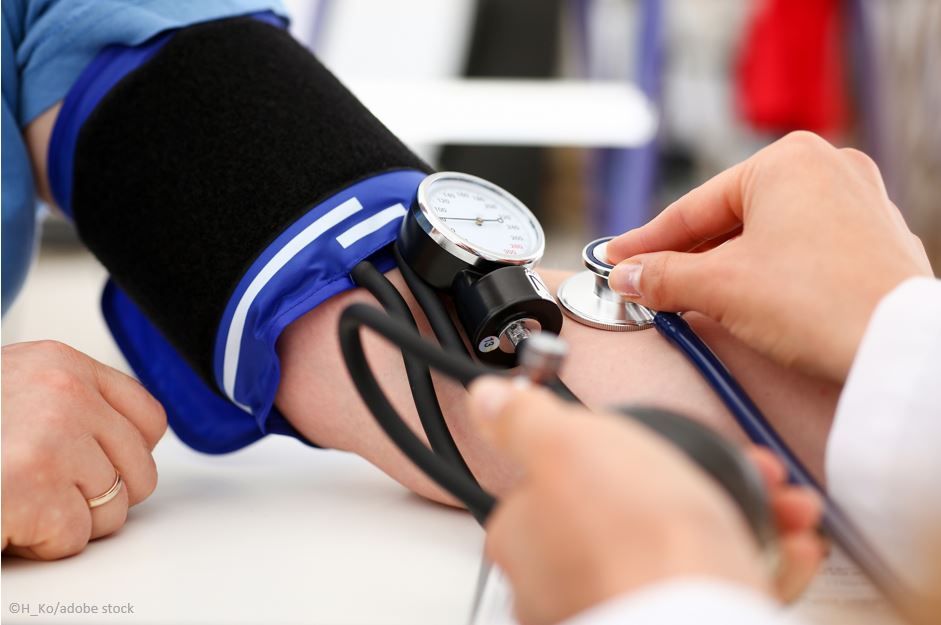Baxdrostat in Phase 2 Clinical Trial Proves Effective, Safe in Treatment-resistant Hypertension
In patients with treatment-resistant hypertension on stable doses of at least 3 antihypertensive agents, baxdrostat, a selective aldosterone synthase inhibitor, was associated with dose-related reductions in blood pressure (BP) with no impact on cortisol levels, according to findings from a multicenter, placebo-controlled phase 2 dose-ranging trial.
Study participants with blood pressure ≥130/80 mm Hg who were randomized to 2 of 3 different doses of baxdrostat dosed once daily experienced statistically significant placebo-adjusted decreases in systolic blood pressure (SBP) of −11.0 (2-mg) and −8.1 (1-mg) compared to placebo, reported study authors. All patients were receiving a stable dose of a diuretic among their prescribed antihypertensive agents.
The findings, presetned during the American Heart Association Scientific Sessions 2022, were published simultaneously in the New England Journal of Medicine.
To reach the goal of an in-office BP of <130/80 mm Hg recommended in the US, patients with treatment-resistant hypertension are often receiving at least 4 BP-lowering agents. The current guideline-recommended fourth-line drug is the aldosterone receptor antagonist spironolactone, even though it is frequently associated with dose-limiting adverse events, the authors write in the New England Journal of Medicine. There has been no new class of antihypertensive medication approved in the US since 2017, they add, while treatment remains inadequate for between 40% and 50% of patients with hypertension.
There has been no new class of antihypertensive medication approved in the US since 2017, they add, while treatment remains inadequate for between 40% and 50% of patients with hypertension.
In preclinical and phase 1 studies, baxdrostat has proven highly selective for aldosterone synthase while not affecting the enzyme required for cortisol synthesis, the authors explain, thus setting the stage for the current phase 2 study examining the agent’s efficacy and safety in patients with treatment- resistant hypertension.
Participants, recruited primarily at community-based practices in the US as well as at several academic hospital-based practices, were aged ≥18 years, on at least 3 antihypertensive agents including a diuretic, and had a mean seated BP of at least 130/80 mm Hg. Exclusion criteria were seated SBP of at least 180 mm Hg or seated DBP of at least 110 mm Hg, eGFR <45 ml/min/1.73m2, and uncontrolled diabetes.
Investigators randomized the final cohort to receive to receive baxdrostat (0.5 mg, 1 mg, or 2 mg) once daily for 12 weeks or placebo. The efficacy endpoint of primary interest was change in mean seated SBP from baseline to 12 weeks in each baxdrostat dose group vs the measure in the placebo group.
FINDINGS
The modified intention-to-treat cohort of 274 was predominantly White (70%), while the percentage of Black participants, 28%, was higher than the proportionate representation in the US population; 43% identified as Hispanic and 2% as Asian. Use of background medication and demographics were similar across groups, according to the study.

A total of 248 patients completed the 12-week treatment period.
Data analysis at 12 weeks found dose-dependent changes in SBP of −20.3 mm Hg, −17.5 mm Hg, −12.1 mm Hg, and −9.4 mm Hg in the 2-mg, 1-mg, and 0.5-mg baxdrostat-treated study groups and the placebo group, respectively.
When investigators compared the placebo group change in SBP from baseline of -9.4 mm Hg with changes in the 3 baxdrostat dosing groups, significantly greater decreases were observed in the 2-mg baxdrostat group ( −11.0 mm Hg; 95% CI, −16.4 to −5.5; P<.001) and in the 1-mg baxdrostat group (−8.1 mm Hg; 95% CI, −13.5 to −2.8; P.003), compared with placebo therapy. The researchers report the decreases in SBP from baseline were not significantly greater in the 0.5-mg baxdrostat group compared with placebo therapy.
In their safety analysis, the investigators report no deaths and no serious adverse events attributed to baxdrostat. In addition, there were no instances reported of adrenocortical insufficiency. There were baxdrostat-related increases in potassium levels of ≥6.0 mmol/L observed in 2 patients, however after drug withdrawal and reinitiation, the increases did not recur.
In their discussion the researchers note that although medication nonadherence may account in some cases for treatment resistant hypertension, a growing body of evidence suggests that in adherent patients, “treatment-resistant hypertension is a subtype of hypertension that has a poor response to conventional drugs because of its pathogenesis.”
“Collectively these findings demonstrate how baxdrostat uniquely helps address a known cause of elevated blood pressure, potentially offering a much needed treatment option for patients with tough to control hypertension,” said lead investigator Mason Freeman, MD, chief medical officer of baxdrostat manufacturer CinCor, in a statement.
Reference: Freeman MW, Halvorsen YD, Marshall W, et al. Phase 2 trial of baxdrostat for treatment-resistant hypertension. N Engl J Med. Published online November 7, 2022. doi:10.1056/NEJMoa2213169